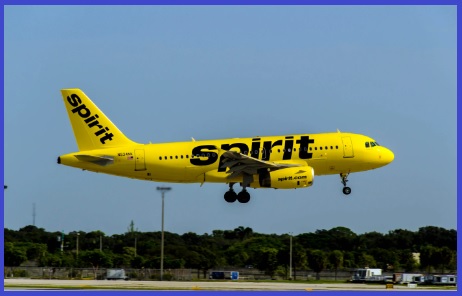
(Photo : Spirit Airlines)
Spirit Airlines
- Spirit Airlines has filed for bankruptcy protection due to significant debt and quarterly losses.
- The airline has entered an agreement with bondholders to reduce debt and increase financial flexibility.
- Spirit has secured a $350 million equity investment and $300 million in debtor-in-possession financing to support it through the Chapter 11 process.
- The airline's future focus will be on restructuring its operations and finances to emerge stronger and more sustainable.
Spirit Airlines, a pioneer in the no-frills air travel sector in the United States, has filed for bankruptcy protection. This move comes in the wake of a series of quarterly losses and a significant debt burden that the airline has been grappling with.
The financial woes of the airline were further exacerbated by the collapse of its planned $3.8 billion merger with JetBlue Airways earlier this year and the impact of RTX's Pratt & Whitney Geared Turbofan (GTF) engines snag that grounded many of its aircraft.
Despite robust travel demand, Spirit Airlines, recognized for its bright yellow livery, has been losing money. The primary cause of the airline's financial troubles has been its struggle with inflated costs. According to a court filing on Monday, the airline listed its estimated assets and liabilities in the range of $1 billion to $10 billion each.
In an attempt to alleviate its financial distress, Spirit has entered into an agreement with its bondholders. This agreement is expected to reduce the airline's total debt and provide increased financial flexibility.
Bankruptcy Protection and Restructuring
As part of the prearranged Chapter 11 bankruptcy protection, the airline has secured a commitment for a $350 million equity investment from existing bondholders. These bondholders will also provide $300 million in debtor-in-possession (DIP) financing. This financing, along with available cash, is expected to support the airline through the Chapter 11 process.
Spirit Airlines, which began as a long-haul trucking company in 1964 before transitioning to aviation around 1983, has had a storied history. It initially offered leisure packages to popular destinations under the name Charter One Airlines and rebranded to Spirit in 1992. The discount carrier gained popularity among budget-conscious customers willing to forgo amenities like checked bags and seat assignments.
However, the airline's current financial predicament, along with similar troubles at some of its rival budget carriers, has sparked discussions about a flawed business model among some Wall Street analysts.
Industry Impact and Future Outlook
Ultra-low-cost carriers, which excelled at keeping their expenses low and offering affordable, no-frills travel, have struggled since the pandemic as travelers prefer to pay extra for a more comfortable journey as they pursue experiences. The airline industry has been severely impacted by the global COVID-19 pandemic, with passenger air service being one of the most affected sectors.
Spirit's bankruptcy filing is not an isolated incident. Many Latin American airlines, including Avianca, Aeroméxico, and LATAM, have filed for Chapter 11 protection in the US due to the financial strain caused by the pandemic. Unlike the US and countries in Europe, Asia-Pacific, and other jurisdictions, which provided billions of dollars in grants and loans to their aviation industries, Latin American countries provided limited or no state aid to airlines to offset losses from the COVID-19 pandemic.
As Spirit Airlines navigates through this challenging phase, the focus will be on restructuring its operations and finances to emerge stronger and more sustainable. The airline's future course will be closely watched by industry observers and stakeholders alike.
The journey of Spirit Airlines from a trucking company to a major player in the aviation industry is a testament to its adaptability and resilience. The airline's current situation serves as a stark reminder of the harsh realities of the aviation industry, particularly in the wake of a global pandemic.









